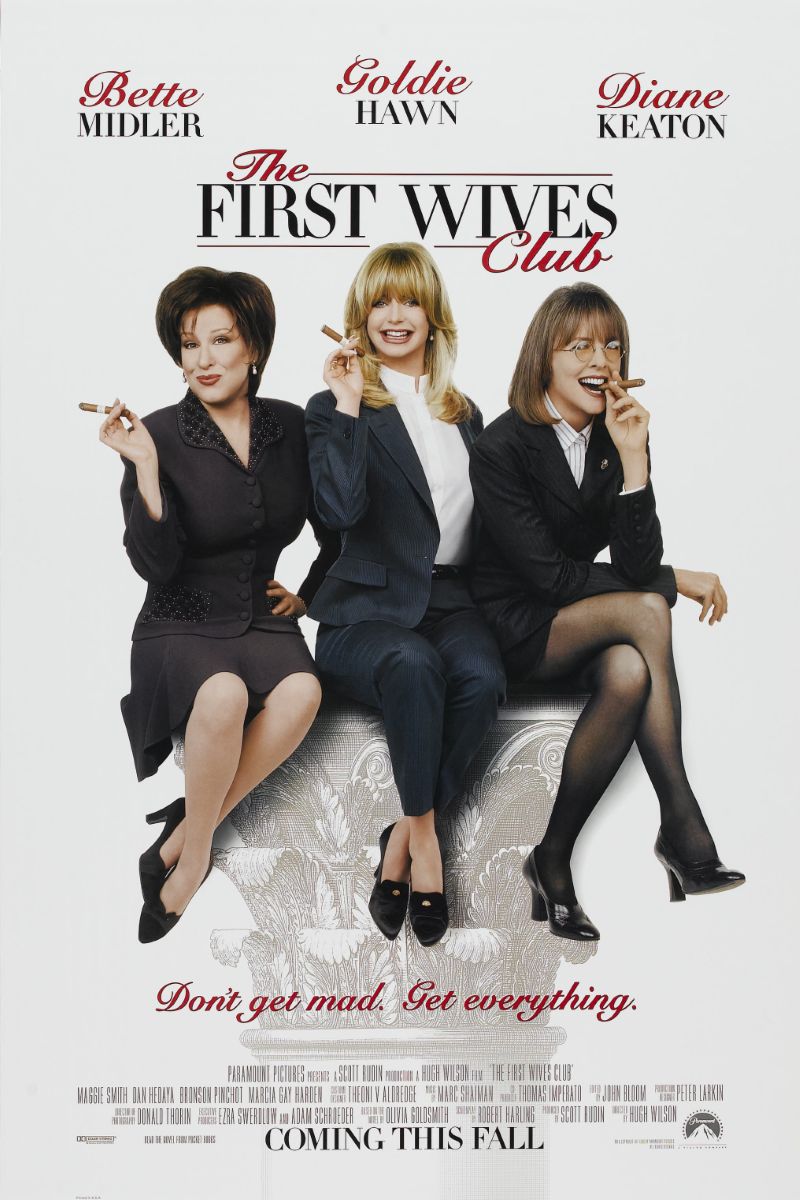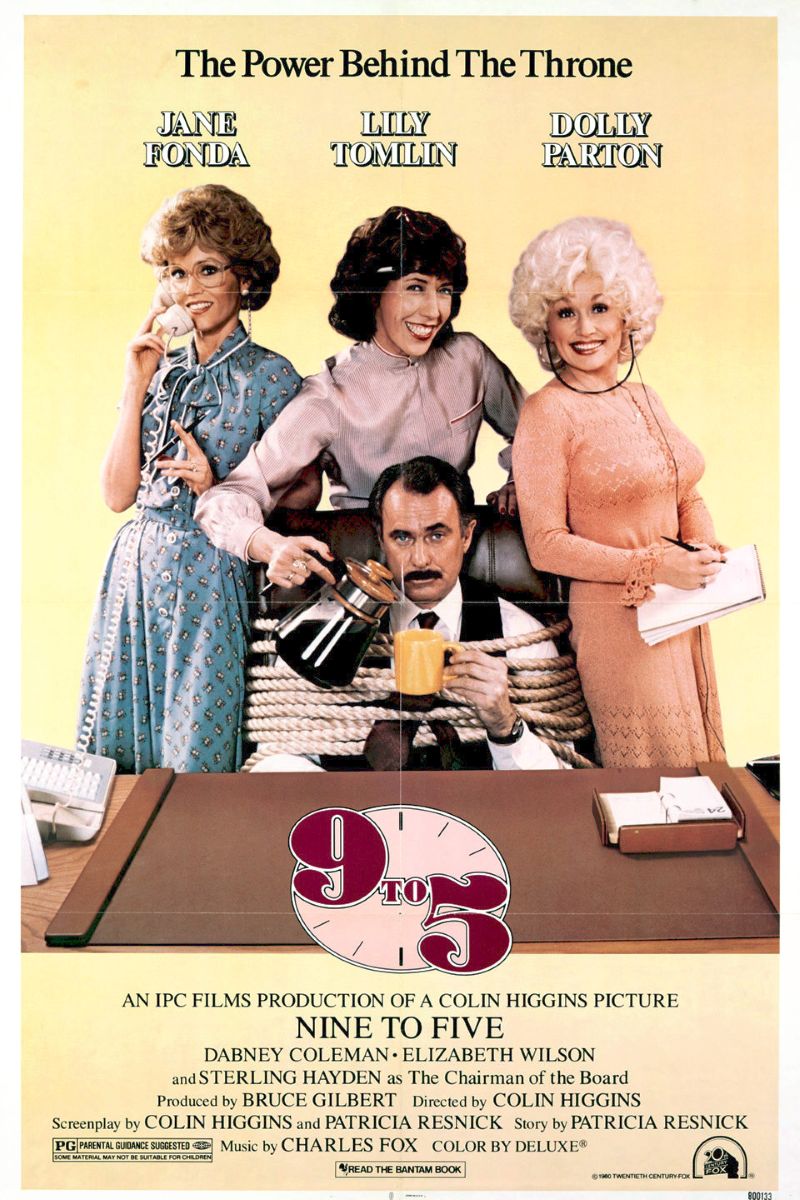
The First Wives Club
The First Wives Club
A comedy film about three middle-aged women who team up for revenge after being abandoned by their husbands. This 1996 work starring Bette Midler, Diane Keaton, and Goldie Hawn humorously explores the marriage crisis, age discrimination, and self-worth reconstruction faced by middle-aged women.
Cast
🎥 Film Analysis & Review
In the mid-1990s, when Hollywood was still puzzling over how to portray middle-aged women, “The First Wives Club” pushed three women over fifty to center stage in a way that was both commercial and subversive. Directed by Hugh Wilson, this comedy is more than a revenge story—it’s a frank commentary on middle-aged women’s circumstances in American society, a satirical counterattack on disposable culture, and a joyful anthem to the power of female solidarity. The brilliant performances by Bette Midler, Diane Keaton, and Goldie Hawn made this film an iconic work of 1990s feminist popular culture, proving that middle-aged women’s stories are equally worth telling and celebrating.
The “Discarded” Crisis of Middle-Aged Women
The core issue of “The First Wives Club” is the systematic devaluation faced by middle-aged women in American society. Annie (Diane Keaton), Brenda (Bette Midler), and Elise (Goldie Hawn) represent three different types of middle-aged women: intellectual, middle-class housewife, and wealthy socialite. Yet regardless of their different social positions, they all face the same fate—being abandoned by their husbands for younger women.
This “trade-in” pattern reflects deep age and gender discrimination. Men’s value often increases with age—they become more powerful, wealthier, more attractive. But women’s value is narrowly defined by youth and beauty; once these are lost, they’re viewed as outdated commodities. Through the three protagonists’ experiences, the film reveals the cruelty and injustice of this double standard.
Annie’s story is particularly representative. As a successful psychiatrist, she has achieved great professional success, yet these achievements seem worthless in marriage. Her husband abandons her not because she failed but because she “aged.” This experience makes her realize that in patriarchal society, women’s professional achievements can never compensate for age-related “depreciation.”
The Redemptive Power of Friendship
The film’s most moving aspect is the process of three women rebuilding their friendship. They were close friends in college, but marriage and family responsibilities drove them apart. Only when they all face similar crises do they find each other again. This reunion isn’t accidental but inevitable—in a world hostile to middle-aged women, only women in similar situations can truly understand each other’s pain.
Their friendship isn’t built on superficial social foundations but on shared trauma and determination to resist. When they realize they’re not lonely victims but part of a systematically oppressed group, their anger transforms from personal to political, their resistance from passive to active.
The film’s most symbolic scene is when they sing “You Don’t Own Me” together. This 1963 song becomes an anthem of female liberation; their chorus isn’t just a declaration to ex-husbands but an announcement to all society: we’re not anyone’s appendages, we have our own value and dignity.
Economic Power Awakening
An important theme in “The First Wives Club” is the importance of economic independence for women’s liberation. All three protagonists depended to varying degrees on their husbands’ economic support in marriage, and this dependence became the source of their control. When they decide to fight back, their chosen weapons aren’t violence or emotional manipulation but economic means.
Brenda uses her knowledge of her ex-husband’s business to expose his tax evasion; Annie uses her professional expertise to psychologically defeat her ex-husband’s young girlfriend; Elise uses her social connections to destroy her ex-husband’s social status. These strategies share a common thread—they all utilize their underestimated abilities and resources, transforming them into power.
The film’s message is clear: women shouldn’t pin their economic security on marital relationships but should develop their own economic capabilities. Only economic independence provides true freedom of choice and the confidence to resist injustice.
Double Standards of Ageism
The film’s critique of ageism is particularly sharp. In Hollywood and American society, male actors can perform into their seventies and eighties, while female actors are often considered “over the hill” after forty. The success of “The First Wives Club” ($180 million worldwide box office) proved audiences’ hunger for middle-aged women’s stories and challenged the film industry’s ageist traditions.
The three protagonists’ ages—all over fifty—was a bold choice in Hollywood at the time. They don’t try to hide their age or play characters younger than their actual years but openly accept and celebrate their maturity. This attitude itself resists ageism, telling audiences that age isn’t shameful but a symbol of wisdom and experience.
The portrayal of young women (like Sarah Jessica Parker’s character) is also interesting. They’re not simple villains but another type of victim—objectified as symbols of youth, used to satisfy male vanity, their value similarly reduced to appearance and age. This portrayal avoids simplifying conflict as competition between women, instead pointing to deeper systemic problems.
Balancing Motherhood and Self-Realization
All three protagonists are mothers, but the film avoids reducing them to “wounded mother” archetypes. Their identities are multidimensional: Annie is a psychiatrist, Brenda is a housewife with business acumen, Elise is a socialite with artistic pursuits. Their resistance isn’t about being better mothers but about being more complete people.
The film’s treatment of motherhood is subtle. It acknowledges motherhood’s importance to women but refuses to make it women’s sole definition. The three protagonists have different relationships with their children, but they’re all trying to balance maternal responsibilities with personal development. Their children also show support for their mothers’ self-rediscovery, and this intergenerational understanding is a warm highlight of the film.
Moral Complexity of Revenge
The revenge plot in “The First Wives Club” is morally complex. On one hand, the three protagonists’ anger is justified, their counterattack a response to injustice. On the other hand, some of their actions may cross legal and moral boundaries. The film doesn’t simply glorify or condemn their behavior but places it in specific contexts.
Their revenge isn’t from pure malice but from pursuit of dignity. They don’t want to destroy their ex-husbands but to make them bear consequences of betrayal, to realize they’re not disposable objects. This revenge is more like education, a way to make men recognize women’s value anew.
The film’s ending also reflects this moral complexity. The three protagonists don’t achieve traditional “happy endings”—they don’t find new love or reconcile with ex-husbands. Instead, they gain something more precious: self-respect, genuine friendship, and confidence in the future.
Feminist Expression Through Popular Culture
The success of “The First Wives Club” proves feminism can spread through popular culture. The film doesn’t use academic language or heavy style but packages serious social issues with humor and entertainment. This strategy allows feminist ideas to reach broader audiences, including those unfamiliar with theoretical feminism.
The dialogue is full of wit and satire, with many lines becoming classic feminist quotes. For instance, Brenda’s famous line “Don’t get mad, get everything” became a generation of women’s motto. These dialogues provide not just entertainment but points for reflection.
The costume design also deserves attention. The three protagonists’ clothing reflects both their personalities and transformation processes. From initial conservative dress to later bold styling, costumes become external expressions of their internal awakening. This visual language adds rich layers to the film.
Questioning Traditional Marriage Models
The film fundamentally questions traditional marriage models. The three protagonists’ marriage failures aren’t personal failures but institutional failures. Traditional marriage is built on gender inequality: men provide economic support, women provide domestic service and emotional labor. When this exchange relationship becomes unbalanced, marriages break.
The film reveals hidden power relations in traditional marriage. Husbands’ abandonment of wives seems like personal choice but is actually abuse of power. They use economic advantages and social status inequality to unilaterally end marriages without bearing corresponding consequences. This inequality manifests not just in marital relationships but in post-divorce property division and social perception.
The three protagonists’ counterattack is actually a correction of this inequality. They demand not just economic compensation but respect and recognition. They refuse to be simply “disposed of,” insisting their ex-husbands face consequences of their actions.
Middle-Aged Women’s Sexuality and Desire
While “The First Wives Club” mainly focuses on friendship and revenge, it also touches on an often-ignored topic: middle-aged women’s sexuality and desire. In mainstream culture, middle-aged women are often desexualized, their sexual needs and romantic desires viewed as inappropriate or ridiculous.
The film partially challenges this stereotype through Elise’s character. Her beauty and charm haven’t disappeared with age; she’s still an attractive woman. However, the film’s treatment of this theme is relatively conservative, not deeply exploring middle-aged women’s sex lives and emotional needs. This may reflect 1990s society’s sensitivity to this topic.
Nevertheless, the film still conveys an important message: middle-aged women aren’t sexually incapable; they still have the right to love and be loved. Their value shouldn’t decrease with age; their charm has various forms and expressions.
Class and Race Limitations
While “The First Wives Club” breaks ground on gender issues, it has obvious limitations regarding class and race. The three protagonists all come from the upper-middle class; their struggles, while real, don’t necessarily represent all women’s experiences. Working-class women or women of color face challenges that may be more complex and severe.
The film has few characters of color, mainly concentrated in service positions. This lack reflects mainstream Hollywood’s racial blind spots in the 1990s and limits the film’s universal significance. While middle-class white women’s experiences are important, they can’t represent all women’s voices.
Similarly, the film’s reliance on economic privilege deserves criticism. The three protagonists can seek revenge largely because they possess certain economic resources and social connections. For women lacking these resources, facing similar predicaments might offer far fewer choices.
Power and Limitations of Comedy Form
“The First Wives Club” chooses comedy to address serious social issues, a choice with both advantages and limitations. Comedy makes the film more accessible, reaching broader audiences. Humor can lower audience defenses, allowing them to accept subversive viewpoints through entertainment.
However, comedy form may also dilute issues’ seriousness. Some audiences might view the film as pure entertainment, ignoring its social critique. Additionally, comedy’s happy ending might give audiences the illusion that real-world problems can be easily solved.
Nevertheless, the film’s comedic treatment is overall successful. It finds balance between entertainment and education, making audiences laugh while thinking about their own situations. This balance is an important feature of popular feminism and a source of the film’s lasting appeal.
Influence on Future Generations
“The First Wives Club” had important influence on later feminist films. It proved films starring middle-aged women could achieve commercial success, paving the way for later films like “The Devil Wears Prada” and “Mamma Mia!” It also influenced television development; many series focusing on middle-aged women’s lives show its influence.
More importantly, the film provided middle-aged women with a new model of self-perception. It tells them divorce isn’t life’s end but opportunity for new beginnings; age isn’t burden but accumulation of wisdom; friendship isn’t luxury but survival necessity. These messages were radical then and remain relevant today.
The film also spawned real social movements. Many viewers organized their own “first wives clubs” after watching, providing support and help for women facing similar predicaments. This transformation from art to reality proves the film’s social value and demonstrates popular culture’s role in driving social change.
Contemporary Reflection
Nearly thirty years later, problems raised by “The First Wives Club” still exist. Middle-aged women still face age discrimination, the “trophy wife” phenomenon remains common, and economic independence remains a challenge for women. Meanwhile, new problems have emerged, such as age anxiety in the social media era and workplace gender inequality.
However, solutions provided by the film—female solidarity, economic independence, redefinition of self-worth—still have guiding significance. In a rapidly changing world, these basic principles provide stable support points for women.
Most importantly, the film’s optimistic spirit still inspires today’s women. No matter what difficulties faced, with courage, wisdom, and friends’ support, women can redefine their lives and create their own happiness. This belief transcends temporal boundaries, becoming precious legacy of feminist culture.
Conclusion
In that luxurious Manhattan club, when three “abandoned” women raise champagne glasses to celebrate victory, they’re celebrating not just successful revenge against ex-husbands but rediscovery of self-worth. They prove through action a simple yet powerful truth: women’s value isn’t defined by others but created by themselves. This truth, like the song “You Don’t Own Me,” will forever inspire every woman seeking dignity and freedom.
“The First Wives Club” remains significant as both entertainment and feminist text, demonstrating how popular culture can challenge patriarchal norms while reaching mainstream audiences. Its legacy continues through the countless women who found in its story permission to value themselves beyond society’s narrow definitions of female worth based on youth and marital status.
🏆 Awards & Recognition
- • People's Choice Award for Favorite Comedy Motion Picture
- • MTV Movie Award nomination for Best Comedic Performance (Bette Midler)
- • Teen Choice Award nomination for Choice Comedy
⭐ Ratings & Links
Related Recommendations
讨论区
分享您的想法和观点
加入讨论
分享您的想法和观点
加载评论中...

